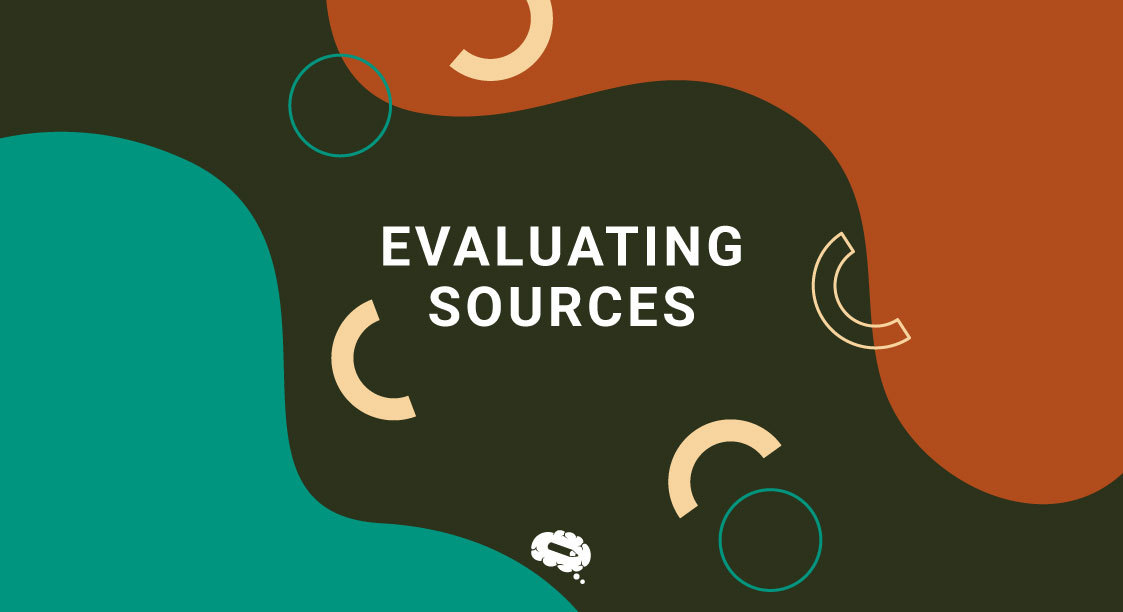You may know (or someone may have told you) that inaccurate, questionable, or out-of-date sources can weaken ideas and cause the reader to question the author’s authority. On the other hand, relevant and informed sources not only prove a thesis but also persuade the audience. That’s why evaluating sources is so important for those who want to write a strong, convincing paper.
In this article, we talk about factors to consider when evaluating sources, the different types of sources, as well as tests to adopt and strategies to consider along the research progress.
Introduction to Evaluating Sources
Evaluating sources refers to the process of assessing the credibility, reliability, and usefulness of information or data obtained from various sources such as books, articles, websites, or other forms of media. This involves critically analyzing the source’s authorship, currency, accuracy, validity, bias, and relevance to determine whether the information can be trusted and used to support a particular argument or research.
Factors to Consider When Evaluating Sources
When evaluating resources, one should consider the following factors:
1. Authority: Who is the author or publisher of the source, and what qualifications or expertise do they have in the subject matter?
2. Objectivity: Is the source biased or impartial, and does it present a fair and balanced perspective?
3. Accuracy: Is the information in the source factual, verifiable, and supported by evidence?
4. Currency: When was the source published or last updated, and how relevant is it to the topic of interest?
5. Relevance: How closely does the source relate to the research question or topic at hand?
6. Coverage: How comprehensive is the information in the source, and does it provide enough coverage of the topic in question?
7. Audience: Who is the intended audience for the source, and does it provide appropriate information for them?
8. Purpose: Why was the source created, and does it serve a particular agenda or bias?
By considering these factors, one can effectively evaluate the quality and usefulness of a resource, and determine whether it is appropriate for a given research project or task.
Types of Sources
A good argument is set on analysis and critique and brings a logical relationship between evidence and conclusions. Every source should contribute to the debate by taking a clear position about its topic.
There are several types of sources, including:
1. Primary Sources
Diaries, letters, speeches, photographs, and artifacts. These primary sources provide first-hand information about a topic.
2. Secondary Sources
Textbooks, scholarly articles, and biographies. These secondary sources are useful to analyze or interpret primary sources.
3. Tertiary Sources
Encyclopedias, dictionaries, and directories. These sources provide an overview or summary of a topic.
4. Academic Sources
Scholarly books, journal articles, and conference papers, which are rigorously researched, peer-reviewed, and written by experts in a particular field.
5. Popular Sources
Newspapers, magazines, and blogs, which are written for a general audience and may contain biased, sensational, or inaccurate information.
6. Government Sources
These refer to information published by local, state, or national governments, including reports, statistics, and regulations.
7. Web Sources
These refer to information available on the internet, including websites, social media, podcasts, and online forums, which may vary in quality and reliability.
It is important to evaluate sources carefully and consider the purpose, audience, and credibility of each source before using it in research or decision-making. It is a way of sifting out misinformation and determining whether you should use it in your research. Useful approaches include the CRAAP test and lateral reading.
The CRAAP Test
The CRAAP test is a framework used to evaluate sources for credibility and reliability. By applying the CRAAP test to sources you encounter, you can determine whether the information is credible and reliable enough to use in your research or decision-making.
CRAAP stands for:
- Currency: Consider the timeliness of the source. Is it current enough for your needs, or is it outdated? Does your topic require up-to-date information or is historical information acceptable?
- Relevance: Consider the relevancy of the source to your research topic. Does the source provide information that is relevant to your subject matter or research question?
- Authority: Consider the expertise and credentials of the author or publisher. Is the author an expert in the field, or do they have relevant credentials? Is the publication reputable?
- Accuracy: Consider the accuracy, objectivity, and verifiability of the information presented. Are the claims supported by evidence? Is the information objective, or is it biased towards a particular point of view?
- Purpose: Consider the purpose of the source. Why was it created, and to whom as the intended audience? Is it primarily for informational purposes, or is there a more persuasive or argumentative aspect to the information presented?
Lateral Reading
Lateral reading is the act of evaluating the credibility of a source by comparing it to other sources. This allows you to:
- Verify evidence
- Contextualize information
- Find potential weaknesses
If a source is using methods or drawing conclusions that are incompatible with other research in its field, it may not be reliable.
Strategies for Detecting Bias
Detecting bias can be challenging, and requires a critical eye. Here are a few strategies to consider when trying to detect bias:
1. Consider the source: Think about the author or publisher of the source. Do they have a particular agenda or bias that may influence the information presented?
2. Look for loaded language: Loaded language uses words emotionally charged to persuade the reader to adopt a particular viewpoint. Be aware of language that is overly emotional or inflammatory.
3. Check for facts: Verify the facts presented by the source. Evidence is stronger than personal opinion.
4. Look for omissions: Check to see if the source is leaving out information that may contradict its viewpoint or provide a fuller picture of the topic.
5. Compare multiple sources: Look for other sources to see if they present a different perspective or contradict the information presented in your initial source.
6. Consider the tone: Is the tone of the source objective or subjective? If the tone is subjective, then it is likely that the source presents a biased viewpoint.
7. Think about your own biases: Be aware of your own biases and prejudices that may affect your interpretation of the information presented.
By using these strategies, you can better detect bias and make more informed decisions.
Join our community and revolutionize scientific communication
Mind the Graph can help researchers to impact their audience by providing a platform for creating professional and custom designs for their scientific publications. The platform’s vast library of illustrations, user-friendly interface, and collaboration features make it an essential tool for researchers who want to communicate their research findings effectively and efficiently.
Mind the Graph also provides a collaboration feature that allows multiple researchers to work together on a single project. This feature is especially useful for research teams that need to create complex graphics or presentations. The platform provides a vast library of scientific illustrations that are scientifically accurate and visually appealing.

Subscribe to our newsletter
Exclusive high quality content about effective visual
communication in science.





